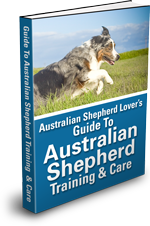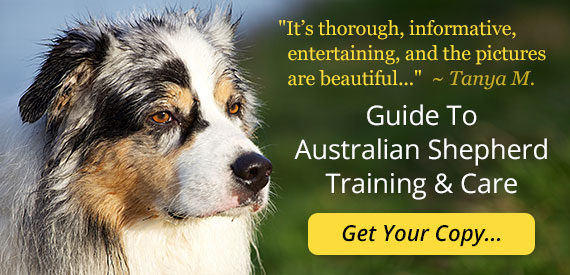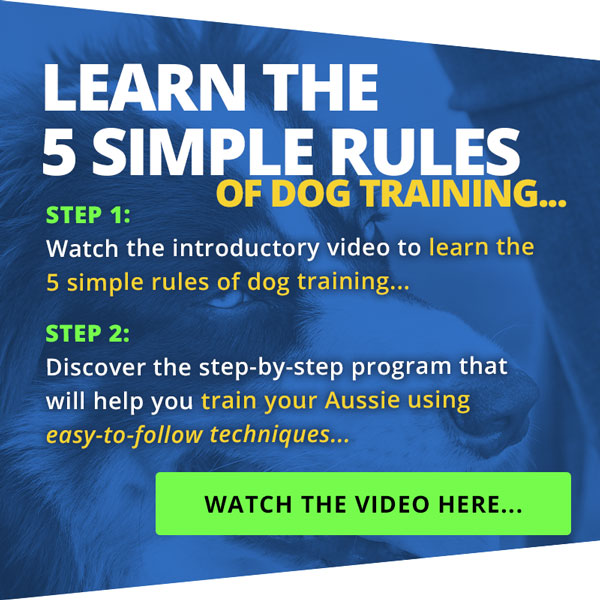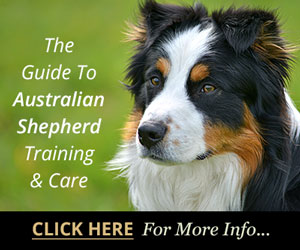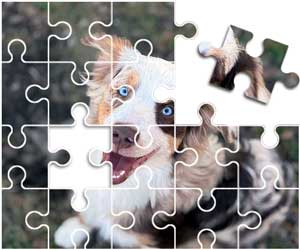
Meet Gus, The Rescue Aussie
by Mark D McKinley
(Lexington, KY)

November 2015. One evening I began searching shelters and rescue organizations for a dog. Hundreds of dogs were available for adoption—one of them grabbed my attention after reading his bio.
Gus was an Australian Shepherd living at a Labradore Rescue shelter in a nearby town. The adoption process and application was extremely thorough. My wife and I decided We wanted to meet Gus. It was 9:44pm on a Saturday night when I submitted the online adoption application.
8:45am Sunday morning I received an e-mail from the rescue shelter explaining that our vet would be called. She also wanted references first thing Monday morning. My emailed reply mentioned that our vet was open 10-5 on Sundays.
Her reply was immediate. Said she would call our vet in a couple of hours. Two hours later I received another email from the shelter, stating that our application had been sent to the shelter director—the person that handles placement. After talking to our vet she felt we were a suitable consideration to adopt.
The rescue shelter owner called me at work the next morning to inform me we qualified for adoption—we could meet Gus at our convenience. We scheduled a meet and greet for Thursday evening.
Gus is a bona fide rescue dog. I’ll spare you the details.
When we arrived at the shelter a different dog was in their outdoor greeting area, potentially meeting its new owner. My wife and I observed two other dogs before meeting Gus. Both dogs were clean and appeared healthy, and seemed happy, full of energy.
It was obvious the shelter owner knew her dogs well and scrutinized potential adoption clients by watching, listening and casual conversation. She also paid attention to their body language. The potential client that arrived before us left the shelter without a dog. The shelter director/owner then brought Gus outside to meet us. We could tell Gus was bonding with the shelter director. His behavior and mannerisms suggested a dog that was hanging out with his best pal.
We spent an hour and half observing Gus, using his name with simple commands. We hung out with the Aussie and got to know the shelter owner. The shelter owner's interaction with the dogs was impressive. Outdoor areas of the facility were clean and orderly.
Our decision was made and I signed the papers and paid the fee—Gus was adopted and rode in the back seat with us to Lexington. From the onset Gus has been a little gentleman. He's adapted to life with us well. We took it slow and easy, allowing Gus to just hang out and find his place in our home. He eats well, drinks plenty of water and enjoys running laps in his fenced backyard. He enjoys leashed walks through the neighborhood and has met three of our neighbors. In a week Gus felt totally comfortable around us. We're starting to get the impression Gus thinks he lives here!
Gus is a purebred with a loving personality. He has a typical Aussie coat coloration—listed as red and white. More accurately, a chocolate head and neck that blends to cinnamon toward his hind legs—forehead, muzzle and chest, predominately white along with lower portion of his legs. Dark brown eyes with a blue fleck in his right eye. Gus moves quietly through the house—his demeanor, calm and gentle. He's an affectionate little guy with a winning smile and enjoys his human pack. Gus kicks it up a notch when outdoors. He shifts into high gear and runs laps around the yard. Gus enjoys an audience.
Introducing a new pet to your home is interesting. Every dog has their own personality. I'd read a few articles about Australian Shepherds when we got Gus. Several articles emphasized their loyalty to family and mentioned an adequate amount of stimulation through play and learning. Aussies enjoy a challenge and love performing tasks. They’re a working breed.
Aussies are loving and passionate toward their owners and very protective of their home. I've noticed slight changes in Gus' behavior in the short time we've had him. Gus is a pleasant dog and greets us with a playful attitude and silly canine noises.
Rescuing an adult Australian Shepherd can produce confusing situations. It's important to remember they matured under the care and guidance of someone else. This seven year old had been taught responsibilities by a previous owner. As a newcomer to our household, Gus was clueless about friends that occasionally visit. Initial introductions took place in social settings or at a friend's home. We quickly discovered Gus isn't keen to the having visitors in our home. He ignores our commands whenever a male visitor is in our home and becomes increasingly anxious if they stay. He’s a gentleman around the female gender. We use caution and monitor his body language when guests arrive.
I met with a canine obedience trainer to better understand the thought process of an Aussie. Pieces of the behavior puzzle came together After talking with a trainer. Deliberate disobedience of a master's command at the Aussie's discretion runs deep in the breed. Their very nature is to second guess and rethink a master's command.
A scenario of an Aussie charged with a flock of sheep was used to explain their instinctive behavior. They're independent thinkers and reprocess commands—a fairly unique trait to herding breeds. Obedience to a command is more involved than just hearing it and reacting on impulse. A decision to obey will involve all of their senses. Aussies have been taught to be responsible for their flock. They must direct and control their flock based on verbal commands and audible signals from their master. The dog is also responsible for the safety and well-being of the flock and a well trained Aussie doesn't take these responsibility lightly.
To be or not be obedient, that is the question processed if their master signals them to move their flock to the right. Understand, the dog knows where his flock is—he sees the flock. He also knows that he can move the flock to the right as instructed. Unknown to his master, the Aussie in the scenario has picked up the scent of a coyote. The Aussie's been trained to obey his master and steer the sheep to the right on command. It isn't a cut and dry decision on the part of the dog. The sheep are safe where they are so the immediate importance to the Aussie is the coyote. The Aussie processes the situation, ignores his master's command, and removes the threat. For the Aussie, keeping his flock safe comes first. Disobedience to the command protected the sheep and ensured their safety. With the immediate threat removed the Aussie then feels comfortable to obey commands and move his flock as instructed.
One might consider such defiant behavior an undesirable trait—unquestioned obedience to a command isn't easy for a herding breed. They're highly intelligent and independent thinkers. Their compliance requires processing all available information and the tendency to second guess their master applies to Aussies herding animals as well as those in the private sector—or, as we know them—Pets!
The scenario gave me renewed respect for an Aussies' knack to question authority—they're bred to assess a situation on their own terms. When guests have visited, Gus hasn't been ignoring our commands to be defiant. He's not sure if they belong in our home. The safety of his family is his main concern.
Gus slept in our bedroom when we first got him. He has slowly migrated further away into the family room—watching out for his family. Learning more about their protective nature possibly explains the gradual shift of Gus spending nights in our family room. My conversation with a canine trainer was enlightening.
Gus has been part of our family for nearly four months. He sleeps in half a dozen different places—about half the time he chooses between his soft round bed in the dining room and his thick memory foam dog pad in the family room. Gus has no problem finding a comfortable place to either curl up or sprawl horizontal with four legs outstretched.
He's a happy dog and affectionate toward us—Gus enjoys our company. He tends to become my shadow on my days off—roaming room to room along side me. Gus loves playful interaction and the herding instincts come alive outdoors. I've become somewhat familiar with the movements and gestures of Border Collies and Aussies by attending the Bluegrass Classic Stockdog Trials each year in May. Herding breeds are incredible canines. Gus will be going with us to the stockdog trials this year. It'll be interesting to see how he reacts around so many herding dogs.
Gus had a blast romping through snow in January. He wallowed in it and pouncing on it. He ran circles and played like a pup, barreling through deep drifts. His enthusiasm kicks into high gear when I chase him around the yard. Gus becomes more animated and starts hopping and hurling himself around in circles, landing in a crouched position, ready to zoom across the yard (again) like a rocket.
- Mark D McKinley
Comments for Meet Gus, The Rescue Aussie
|
||
|
||
|
||
|
||
Have Dog Training Questions?
Check out these introductory dog training videos...
I want my dog to stop being aggressive.
I want some help training my new puppy.
I want my dog to stop barking at everything.
